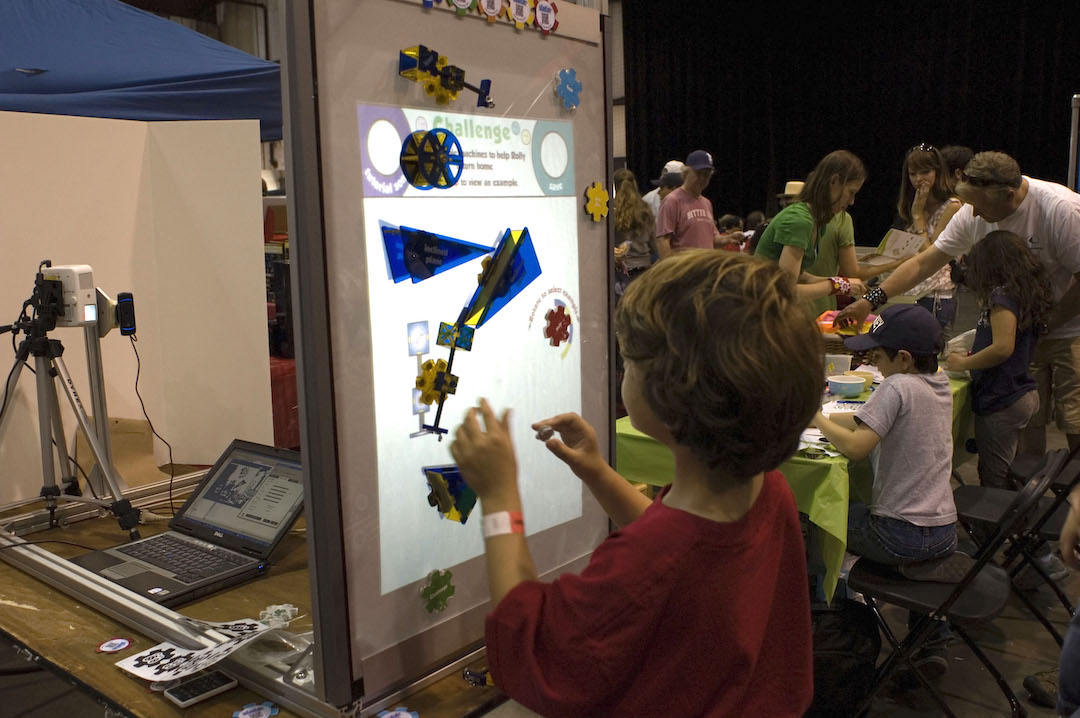
Mechanix is an interactive game and tangible interface for building chain reactions and learning from examples.
The premise of the Mechanix game is to arrange tangible pieces on an interactive display to guide a marble to a target. Using an image detection system, designs people created were automatically saved and projected in place, enabling anyone to see and test example solutions from other players.
context
Children build amazing designs with construction kits, but it's often difficult for them to share what they built in ways that support other creators. One reason is that documenting designs takes a lot of work (for example, consider how tedious it would be for a child to create assembly instructions for a LEGO creation).
What if children's tangible designs could be automatically captured in a way that supports learning from other people's creations?
This guiding question formed the initial motivation for creating Mechanix.
interface
Mechanix started out as a class project at Stanford for Beyond Bits and Atoms, a course in the graduate school of education. I collaborated with my good friend Coram Bryant on the project for a couple years after we took the class.
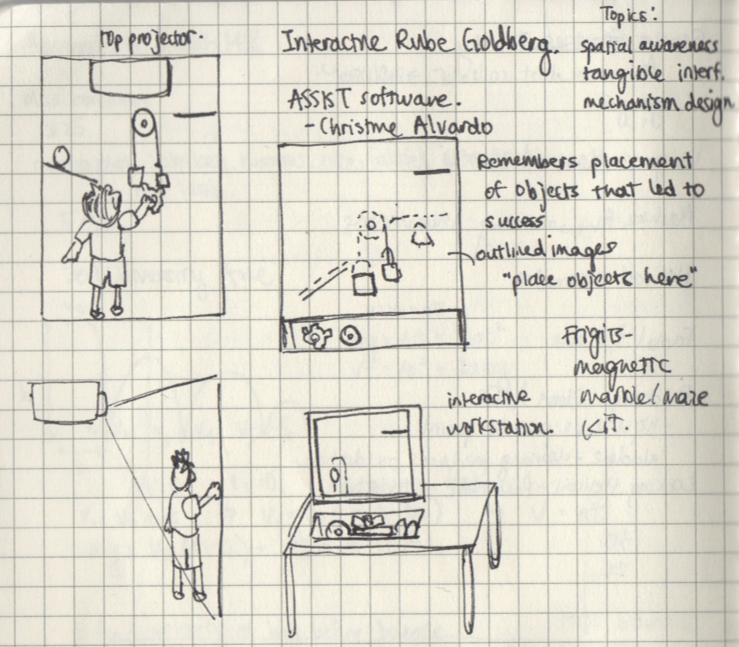
The initial sketch for Mechanix from my notebook in 2010
The game consists of magnetic physical pieces that can be freely arranged on the screen. Each piece represents a type of "simple machine," such as a lever and wheel and axle.
Simple Machine Pieces
On the back of each piece is a fiducial marker, an image marker that can be used to uniquely identify each piece using a webcamera placed behind the display.
One of the innovations of Mechanix was the creation of a transparent magnetic display combining steel mesh, vellum paper (as a projection surface) and hard acrylic for giving the screen structure (we actually filed a provisional patent on this design).
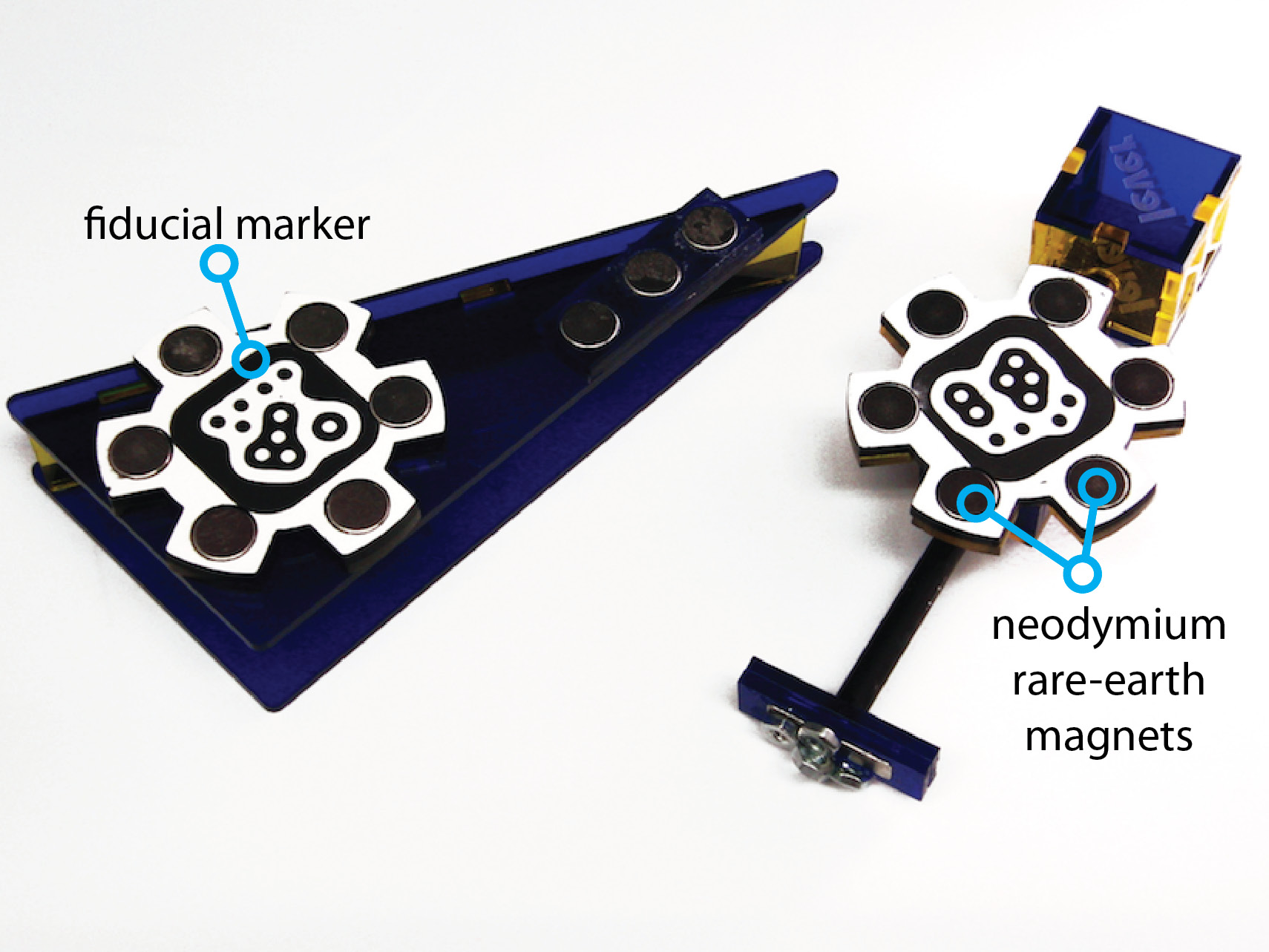
Labelled simple machines
In the game, Rolly the marble wants to get back to his friends, and you're tasked with arranging the pieces to guide the marble back "home."
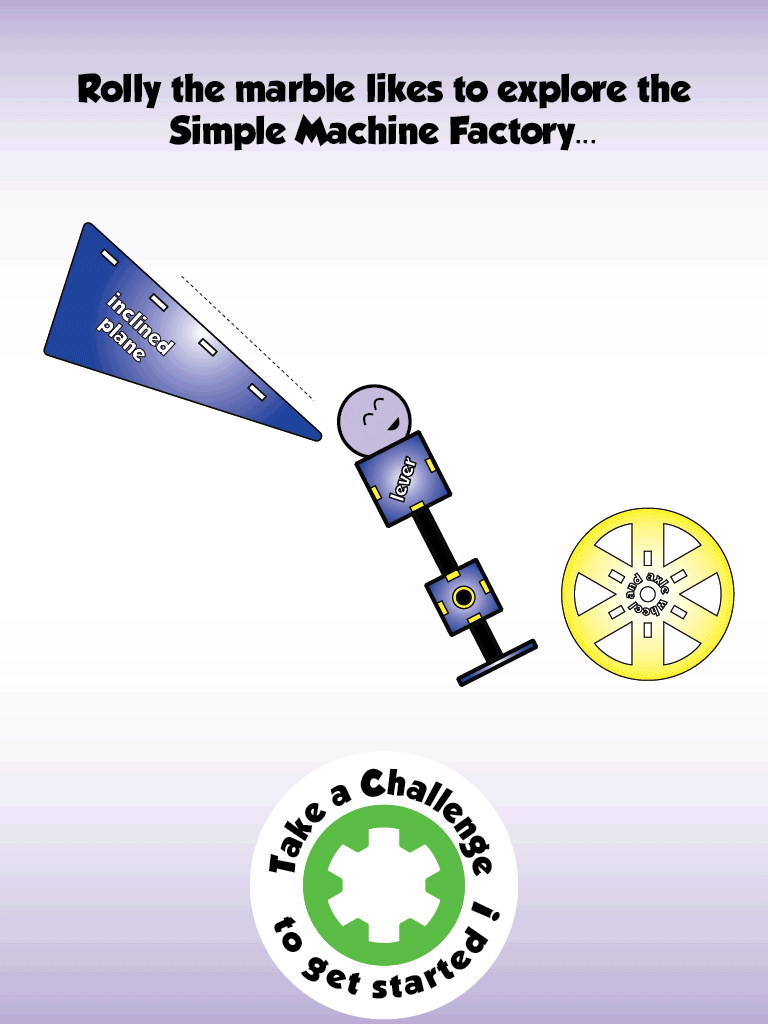
Kids had a ton of fun playing Mechanix! We shared the game at many different events, including Maker Faire Bay Area 2011, where we got an Editor's Choice award.
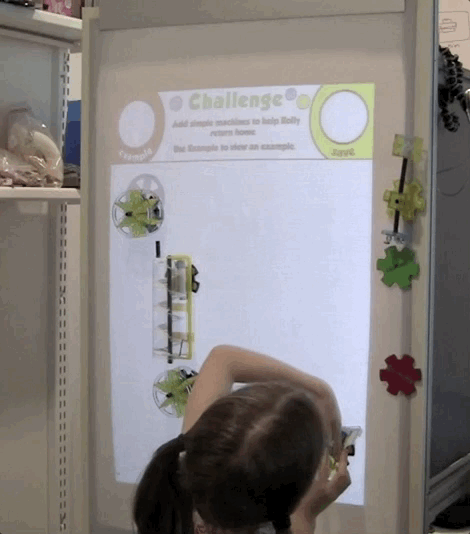
That moment when your design works!
research
We were interested in exploring how we could enable children to learn through building and testing other people's examples and ran several usability studies with children to test out and improve the design.
Reviewing examples with Mechanix
In our initial studies, we found that they often learned about pieces they hadn't used before or discovered interesting combinations to try when looking at other people's examples. However, they didn't necessarily choose to look at examples on their own:
This led us to experiment with different interfaces for reviewing examples, including prompting users by asking them to compare their solution with another, and viewing a portfolio showcasing the examples they created.

Side-by-side comparison

A portfolio summarizing the examples you've created
We found these small changes to Mechanix inspired some surprising behavior:
For more on these reflection interfaces, check out the paper we shared at CHI.
takeaways
Through our research with Mechanix, we saw that automatic documentation of examples exposed children to different approaches to combining simple machine pieces, enabed them to experiment with unfamiliar pieces, and served as a portfolio with which children can review their own designs.
Our work experimenting with reflection interfaces found that incorporating children’s reflections into subsequent interactions motivates learners and makes reflections meaningful.
Multiple reflection interfaces help broaden the reflection experience for each user and support varied preferences across all users. However, the reflection modes should be appropriately matched with children’s design behavior to maximize learning potential.
Finally, audio recordings can enhance learning by providing opportunities to communicate understanding, reinforce interface-specific vocabulary, and forefront misconceptions.
Demo video
CHI Paper
IDC Paper
TEI Paper
Project Documentation